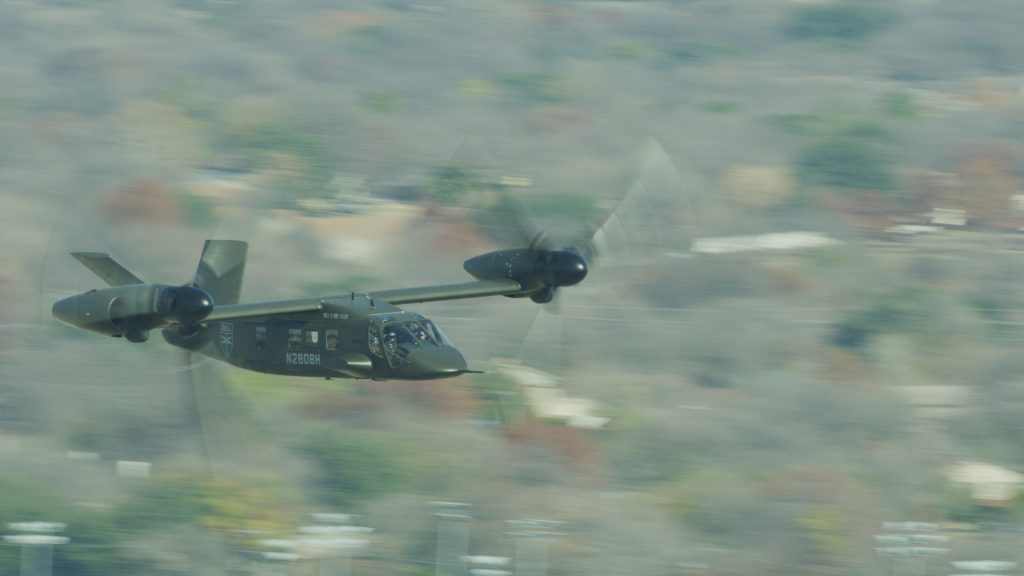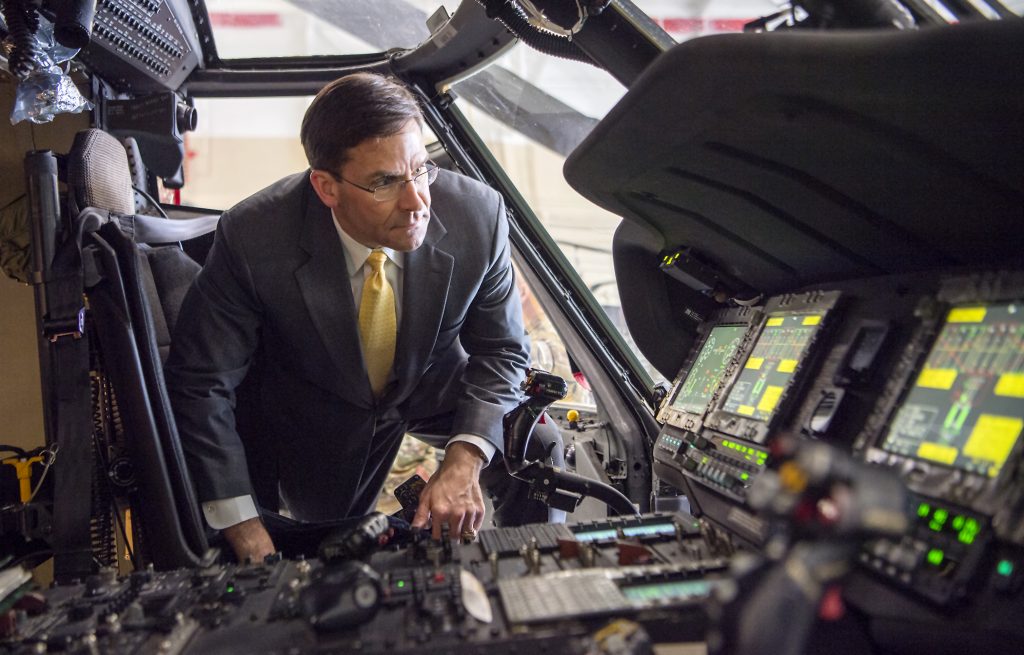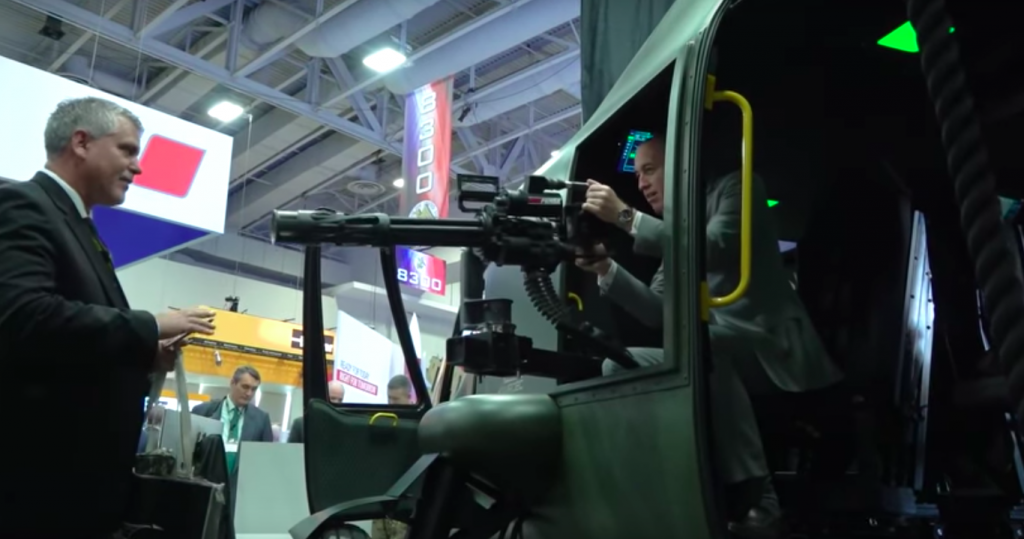Bell V-280 Flies 322 MPH: Army Secretary Praises Program
Posted on
WASHINGTON: Bell’s V-280 Valor prototype exceeded 280 knots this week, making good on the aircraft’s namesake speed, the company announced this afternoon.
And it’ll fly faster before it’s done, a Bell executive told me in an interview.
The news is the latest public triumph for Bell’s tiltrotor technology at a time when its rival for the Army-led Future Vertical Lift program, the Sikorsky-Boeing SB>1 Defiant, is still in ground testing after repeated delays. And, coincidentally or otherwise, Army Secretary Mark Esper went out of his way this afternoon to praise FVL as a model for Army modernization.
Army Secretary Extols FVL
Just over an hour before Bell emailed me about its breakthrough, Army Secretary Mark Esper happened to be singing the praises of Future Vertical Lift. While he didn’t cite either competitor by name, and he didn’t mention the V-280’s speed milestone – he may well not have known of it, although some in the Army certainly did – Esper noted that only one of the two competitors is already doing flight tests.
“There always is a risk of schedule slips or cost overruns and you have to manage that,” Esper told reporters when quizzed about a recent skeptical GAO report on Army modernization. “[But] our new approach is really to prototype as much as we can to help us identify requirements, so our reach doesn’t exceed our grasp. A good example is Future Vertical Lift,” Esper went on, unprompted by any prior question about the program. “The prototyping has been exceptional. We have one aircraft flying, the other one’s supposed to fly soon. It’s really helped us identify what’s in the realm of the possible, so we don’t repeat the mistakes of the past.”
What mistakes does he mean? Well, the Army has an unhappy history of setting ambitious goals – a stealthy helicopter, a tank small enough to fit in a C-130 transport – and then cancelling the program when it realized they were impossible or unaffordable. Now, as the service strives to modernize for major war, it’s radically reorganizing its entire acquisition system for greater speed, which the GAO report said could easily go awry. But Esper argues this time is different: “There has to be room for growth but we’re not looking to develop, field something that is brand new and not ready to go.”
The FVL prototype program – officially known as the Joint Multi-Role Tech Demonstrator (JMR-TD) – long predates this new Army acquisition approach: It officially began in 2011. But those years of work are coming to fruition at the perfect time.
Beyond 280
280 knots isn’t the limit, an exultant Bell executive told me in a quick phone call. “Our sprint speed, our dash speed so to speak, will probably be in excess of 280 knots,” said Carl Coffman, director of sales & strategy for Advanced Vertical Lift Systems. “We’re not sure exactly where it’s going to go yet. I mean, (computer) models certainly give us a good indicator of what we’re going to get to in the design of the aircraft, but until we fly in and continue to expand the envelope, we’re not sure exactly where that airspeed is going to fall.”
Now, the prototype that made the 280-knot flight wasn’t carrying cargo or troops, just its usual testing instruments, the company acknowledged. But the design should be able to hit 280 knots even with a full combat load, they said.
This isn’t just a neat-looking number. Max speed does matter militarily, in very specific circumstances — when you’re trying to dash through enemy air defenses before they can lock onto you and shoot you down. That’s an increasing concern as the US refocuses from fighting low-tech Taliban and ISIS irregulars to advanced adversaries like Russia and China, whose militaries notoriously bristle with dense air defenses.
But you can’t stay at dash speed forever. What’s most operationally relevant is the cruise speed you can sustain throughout a long flight without burning up your fuel or burning out your engines. The whole reason to build a tiltrotor is to be able to take off, land, and hover like a helicopter but get the cruise speed and range of a turboprop plan.
“We’re looking for a speed that’s probably a little less than that [i.e. 280 knots] for long-range cruise, just based on fuel efficiency,” Coffman said. By way of comparison, the standard transport helicopter the V-280 is meant to replace, the venerable but much upgraded UH-60 Black Hawk, cruises at the much more sedate rate of about 150 knots (172 mph) – 53 percent of the V-280’s namesake speed. (The heavily armed and armored AH-64 Apache gunship, a very different kind of aircraft, cruises at up to 176 mph). Bell likes to say the V-280 “flies twice as fast and twice as far” as legacy helicopters, which is really rounding the numbers in their favor, but it’s still a reasonable approximation of what testing shows so far.
That said, the V-280 hasn’t done many long-range test flights yet. Its longest run was from its production site in Amarillo to Bell’s test facility in Arlington, Texas, about 370 miles. That distance is already 16 percent more than the maximum range of the UH-60 (317 miles for the latest “M” model) unless it trades cargo space for extra fuel tanks.
“We’re very satisfied with the performance of the aircraft and the [fuel] burn rate,” Coffman. “We’ll meet that range parameter as well.” The target is 575 to 920 miles (500 to 800 nautical miles) depending on the mission profile.
That leaves one last big challenge for the V-280: agility. With two huge rotors side-by-side, a tiltrotor flies very differently from a traditional helicopter, and archrival Sikorsky argues their competitor’s aircraft won’t be as maneuverable at low speeds and low altitudes in tight spaces.
Such “agility at the X” is vital for the Army, which needs to land assault troops in and retrieve casualties from jungles, mountains, and huge mega cities. But so do the Marines and Air Force Special Operations Command, which have used Bell’s earlier, larger V-22 Osprey tiltrotor for years without complaint. The V-280 design incorporates all the lessons from the V-22 – and it’s also about half the size.
Having never fielded tiltrotors before, “the Army’s certainly concerned about the low-speed agility,” Coffman said, “(but) the customer’s been out here and seen the aircraft perform, and they are getting very comfortable (that) the aircraft’s going to have the agility required.”
Subscribe to our newsletter
Promotions, new products and sales. Directly to your inbox.



